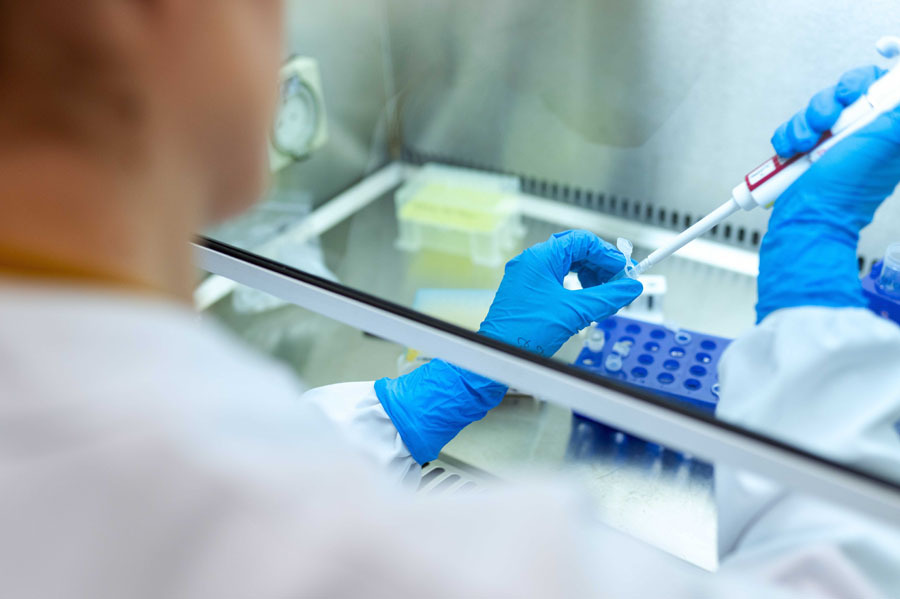Efficacy and rational application of doxycycline
Published on:
2022-02-15
Doxycycline is a tetracycline antibacterial drug, and its antibacterial activity is more ....

Doxycycline is a tetracycline antibacterial drug, and its antibacterial activity is more than ten times that of oxytetracycline. However, its stability is not good, and it is prone to hydrolysis, oxidation, isomerization and other chemical reactions when exposed to light and heat; When meeting metal ions such as magnesium, calcium, zinc, iron, barium, manganese and aluminum, they are prone to complexation and chelation reactions, forming salts that are insoluble in water and have poor activity.
Its pH value in the aqueous solution shows strong acidity, and the pH value of its 1% aqueous solution is 2-3. The acidity in its aqueous solution is strong, so it is not suitable to be mixed with alkaline drugs for livestock and poultry drinking water or injection. Doxycycline is administered orally to livestock and poultry in a wide range of safe doses. The adverse reaction monitoring of doxycycline in veterinary clinical use for decades shows that it is very safe for animals.
Doxycycline is administered by drinking water. After oral administration, animals absorb it rapidly, have high bioavailability, and have a large drug distribution volume in the body. After doxycycline is absorbed by animals, it is widely and effectively distributed in the lungs, trachea and bronchus, tracheal secretions, pus, saliva, joint fluid, intestinal tissue, pleural effusion, ascites, etc.
Doxycycline (DOX), as a traditional tetracycline antibiotic, plays an antibacterial role mainly by penetrating the cell membrane and binding to 30S ribosomal subunit, interfering with bacterial tRNA / mRNA interaction, and finally inhibiting bacterial protein synthesis.
Recent studies have shown that doxycycline also has many other non antibiotic biological effects.
It can protect mtecl (thymic medullary type epithelial cell Line1) against MMC induced apoptosis and promote the proliferation of mouse thymic epithelial cell line (MTEC1) through MAPK pathway; At the same time, it can also pass NF- κ B and MAPK pathways promote the secretion of IL-6 and GM-CSF by MTEC1.
Thymic epithelial cells can promote the development and differentiation of thymocytes. Therefore, doxycycline can promote the repair and reconstruction of the damage of cellular immune system caused by diseases in clinical treatment. Therefore, doxycycline not only has broad-spectrum antibacterial and anti Mycoplasma effects, but also has the effect of non antibiotic immunity.
When winter comes, the immune system of livestock and poultry is damaged due to the rampant virus. Doxycycline is a good compatible ingredient while using antiviral drugs to inhibit and kill the virus. Compared with other antibiotics, the treatment prescription issued by clinical veterinarians reflects different treatment effects.
When is doxycycline the best treatment; Here is a simple analysis of the use of tetracycline. Doxycycline oxytetracycline is the most common.
1. A simple summary is "two bacteria, four bodies and one insect spirit"
2. Two bacteria are bacteria and actinomycetes. Doxycycline is effective for some bacterial diseases, so it is often used to treat respiratory diseases;
3. Tetrahedron refers to Mycoplasma (wheezing disease, cough, we often use doxycycline); Chlamydia (abortion of sows, high mortality of piglets, and the effect of oxytetracycline on piglets is good), spirochetes (including dysentery, but most people use shizijing), rickettsia (between bacteria and viruses, the disease is relatively rare)
4. A worm refers to blood protozoa, such as amoeba and Eperythrozoon, which belong to blood protozoonosis.
Key words:

